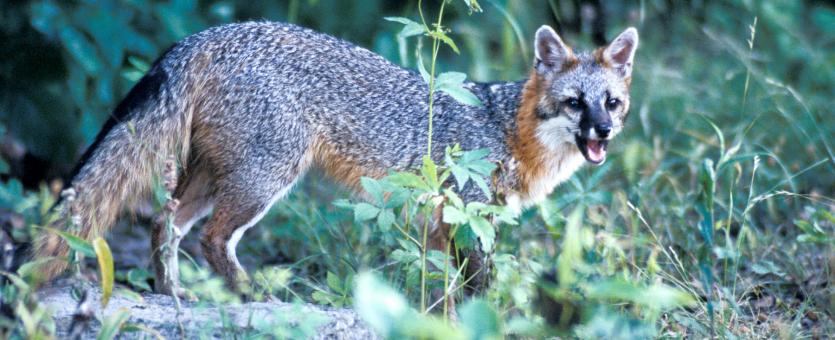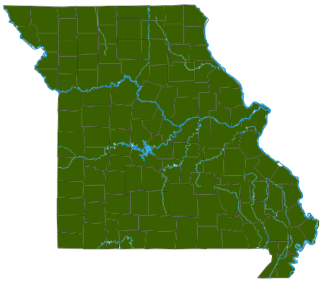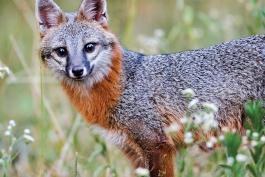
Gray foxes resemble red foxes in general build but are distinguished by their grayish coloration, slightly smaller size, black-tipped tail that is triangular (not circular) in cross section, coarser body fur, and dark brown (not tawny) iris of the eye.
Total length: 31¼–44 inches; tail length: 8½–17 inches; weight: 5–15½ pounds.

Statewide, but most common in the Ozarks of southern Missouri.
Habitat and Conservation
Gray foxes live in wooded areas and fairly open brushland, preferring mature forest at night and young dense forest stands in the day. Primarily nocturnal but often abroad during daytime, the gray fox readily climbs trees, using the front feet to grasp the trunk and hind feet to push upward. In trees, they sun, forage on fruits, and take refuge from dogs.
Food
Rabbits, rats and mice form the bulk of the diet of foxes. Additional items include other small mammalian species, wild birds, insects, and only a small amount of plant material. To a certain extent, they do feed on small livestock and poultry, but the economic loss is not as great as it appears because doubtless some of this is carrion. When available, about a pound of meat is eaten at a feeding.
Status
Common. Although the red fox population has declined in the last thirty years, the gray fox population has remained more stable.
Life Cycle
Mating may occur from January to May, but February through the first week of March is when breeding peaks. Litters generally are born in March to mid-May. Most litters contain 3–5 pups. At about 3 months of age, the pups leave the den area for the first time to accompany their parents on hunting trips. The family disperses in late summer, when the pups are about 6–7 months old. Foxes are chiefly nocturnal but are often out during the day.
Human Connections
The fur is coarse, thin, and used only for collars and trimming on inexpensive coats.
Gray foxes eat many rodents and take far less livestock and poultry than red foxes, so they cause little economic loss.
The gray fox is not esteemed as highly by sport hunters as is the red fox.
Ecosystem Connections
Foxes feed on rodents and help check these abundant forms.
Signs and Tracks

Front track:
- 2 inches long
- 4 toes.
Hind track:
- 1¾ inches long
- 4 toes.
Other notes:
- Can be confused with summer coyote pups or large domestic cats. Cat tracks rarely show claws.
- Stride is 9–16 inches between prints (trotting gait).
- The claws leave marks.
- Seem dainty, small.
- Gray foxes can climb trees.
- Tracks are often seen on top of logs in winter.































